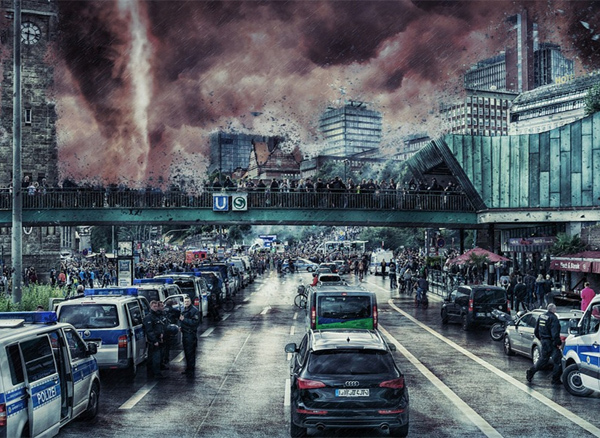Over the past decade, numerous natural disasters have occurred around the world, with developing countries being the main victims, especially in areas with dense populations and weak emergency infrastructure. The occurrence of catastrophic events often results in severe property damage and threatens the lives of people and animals. Therefore, how to effectively prevent and deal with various disaster events has become a very challenging task.


Can the Internet of Things prevent natural disasters?
As global climate change attracts more and more attention around the world, experts are constantly exploring the use of IoT technology to solve and optimize emergencies caused by natural disasters.
Losses caused by various natural disasters such as earthquakes, tsunamis, fires, volcanic eruptions, floods, hurricanes, tornadoes, landslides, and extreme weather conditions are unavoidable. Fortunately, however, we live in an era where tremendous advances in technology can effectively reduce the impact of these disasters. To be precise, IoT technology has matured in a short period of time and expanded its practical application areas. Several researchers, scientists and IoT experts from around the world have been working hard to deploy these smart technologies to minimize the impact of natural disasters.
Although IoT cannot prevent any disasters, it is certain that IoT can help with effective disaster preparedness. It helps predict upcoming disaster events and send early warning notifications to communities through smart systems.
Why is the Internet of Things a technology with great potential in disaster prevention and management?
It is obvious that the first application of IoT is to minimize the risk of natural disaster events. With the help of GIS, smart devices and satellite communications, IoT technology can be used to design early warning systems.
After this, the application of IoT lies in understanding upcoming disaster events. What can raise awareness and guide preparation faster than social media? Of course, traditional media also plays an important role.
Providing real-time communications for emergency response is another potential application of IoT.
After any catastrophic event occurs, the most challenging and tedious task is post-disaster reconstruction and rescue. IoT technology can be effectively used to create online systems for searching for missing persons or even managing emergency funds.
Additionally, IoT-enabled devices and systems can serve as an alternative means of communication when conventional communication infrastructure is poor, compromised, or not functioning. Although the latest innovations in the Internet of Things are not designed for disaster preparedness, they do provide optionality in the event of a disaster. Although it does not contribute to disaster preparedness and disaster resilience, it can provide limited or emergency support in such situations. Communicate in the form of communication.
What is the role of IoT sensors in disaster prevention?
The application of IoT sensors is considered a remarkable innovation and an effective way to prevent natural disasters, especially for those scenarios that lack foresight, which exacerbates the damage of any natural disasters and emergencies. The sensor can provide early warning of disasters by monitoring a variety of climate parameters. IoT sensors can be installed within specific areas to serve as emergency unit systems in the event of a catastrophic event. These sensors continuously monitor weather parameters such as humidity, humidity, temperature, air quality, pressure, water level, etc. When any one or more of these parameters reaches dangerous levels, the sensor network understands these parameters and sends out an emitted signal based on the changes in these parameters. Early warning notification.
In the event of a forest fire, IoT sensors on trees monitor temperature, humidity, CO and CO₂ levels, and local residents are notified in advance, with all details reaching them even before firefighters arrive at the scene.
It would be difficult for any other notification system to match the sensor’s notification speed when it comes to alerting emergency response and making broadcasts. Additionally, sensors help provide real-time details on weather, evacuation methods, traffic, medical services and police. In short, they anticipate upcoming dangers early in order to help make important decisions in advance.
Researchers are further studying specific IoT sensor types, including infrared, which has applications in flood forecast management, and microwaves, which have important applications in earthquakes.